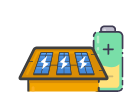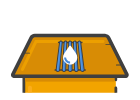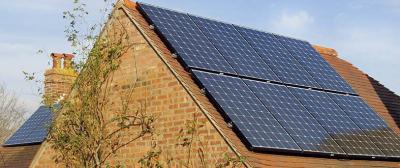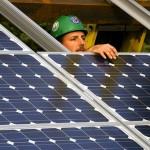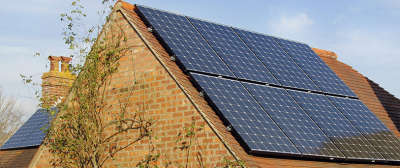Solar Photovoltaics Explained: A Complete 2023 Guide
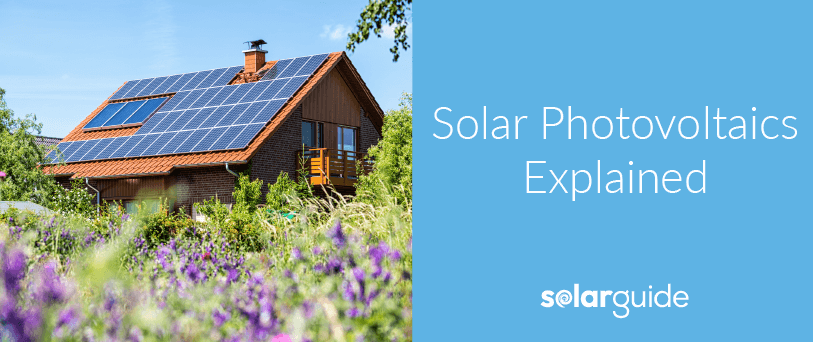
Solar photovoltaic cells are the beating heart of solar panel technology. Also known as PV solar cells, these intricate components all use semiconductors to transfer the energy from photons received from the sun into electrical energy anyone can use to power their home. PV solar systems can thus allow for a more sustainable and renewable form of energy that can help save multiple kilowatts (kW) on your electricity bills.
Solar cells are a wondrous technology that can transform the way we generate power. Let's dive deeper into various types of photovoltaic systems and what they offer.
But first, if you're looking to install solar panels for your home, you'll need an installer you can trust. This can often be a laborious process that takes days of research and price comparisons. However, we can help you simplify the process through our handy service.
All you need to do is fill out a 30-second form with some basic information. Next, we'll provide you with free, non-binding quotes from up to 4 thoroughly vetted, solar panel installers in our network. Click the button below to get started.
What are photovoltaics? Solar PV explained
PV stands for photovoltaic, meaning energy from light. The origin of the term comes from the Greek words: photo, with 'phos,' meaning light, and 'volt,' which refers to electricity.
Solar photovoltaic systems have been around for multiple decades, using the "photovoltaic effect" to absorb sunlight. This phenomenon was first utilised by scientists at Bell Laboratories with silicon solar photovoltaic cells. Since then, the technology has progressed rapidly, powering everything from satellites to entire homes.
A PV solar cell is a multilayer system composed of specially treated semiconductors which allow it to convert solar energy into domestic electricity. The outer layer helps prevent too much reflection so that the panels stay efficient, with the bottom layer being thicker in semiconductors than the top layer. While this is a simplified explanation, the mechanics of most solar cells rely on this same set of principles.
In recent years, solar panels and photovoltaic cells have become more affordable for the average consumer. It's not uncommon to see residential solar panels in everyday life and the efficiency of the technology is far higher than when it started out.
How do photovoltaic cells work?
Photovoltaic cells produce electricity by absorbing light from the sun and utilise semiconductors to convert the photonic energy into Direct Current (DC electricity). This electricity is then passed through an inverter and converted into AC electricity so it can be used by the average UK home. This electrical energy can then be stored in solar batteries or shared with the grid.
Here's a handy illustration showing how photovoltaic panels collect energy from the sun:
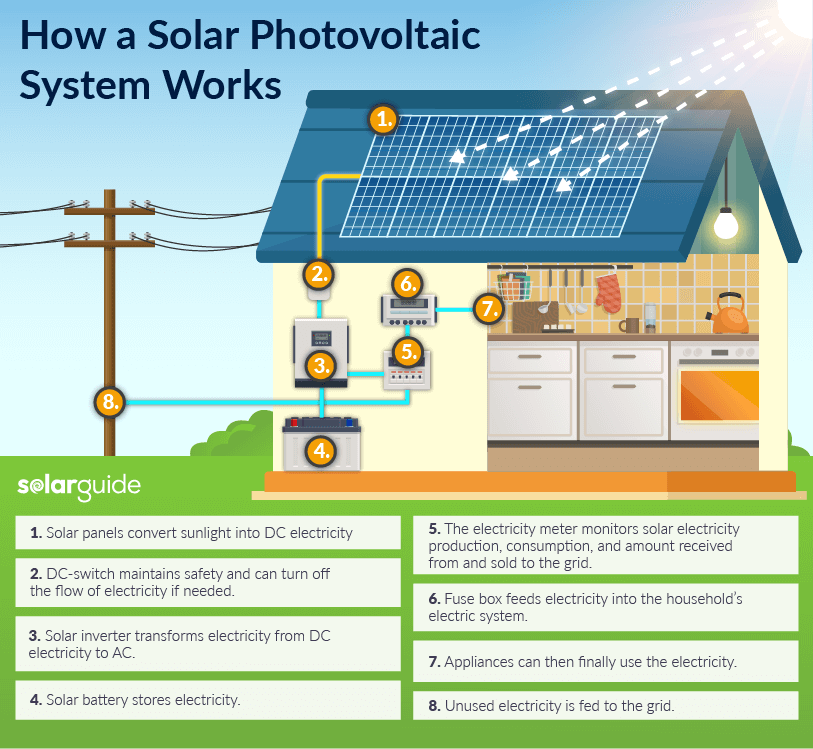
Photovoltaic energy generation can be relatively inefficient, coming in at about 13% to 20% efficiency on average, although high-end systems can be more effective at 25%. However, it is both highly sustainable, renewable, and (with an electric battery) can be stored for later use. It can also allow you to give back to the grid (in exchange for remuneration) if you and your system qualify for the Smart Export Guarantee.
Are Solar Panels and Photovoltaics the Same?
The broad category of solar panels includes photovoltaic cells but is not the same thing. While photovoltaic panels are a type of solar panel, solar panels can also include solar thermal panels, which generate power using the heat from the sun as opposed to light.
PV systems convert energy using cells with semiconductors, while solar thermal panels utilise tubes filled with a liquid (often glycol) with antifreeze to capture heat. The liquid will move around the tubes allowing for the transfer of heat from the sun.
Aside from that, PV energy efficiency is also lower. As mentioned earlier, photovoltaic solar energy systems are about 13% to 20% efficient on average, with high-end panels going up to 25%. Solar thermal panels, on the other hand, can go as high as 70%. Conversely, solar voltaic energy is more storable since solar thermal power often focuses on maintaining heat. Solar thermal panels can also be more expensive.
Types of solar photovoltaic systems
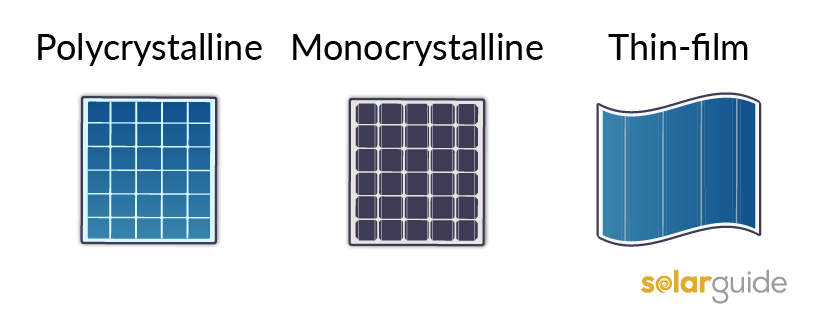
Silicon Solar Cells
Most solar cells manufactured today are comprised of silicon. The material creates cells at reasonable prices and efficiencies. Silicon solar cells are assembled into arrays or large panel systems so that they can gather enough energy for their designated applications.
Silicon solar cells can be further divided into monocrystalline and polycrystalline systems. In terms of monocrystalline vs polycrystalline panels, they can vary in efficiency (15-20% for mono and 13-16% efficiency for polycrystalline). Polycrystalline panels are easier and cheaper to produce but they also take up more space.
Thin-Film Solar Cells
A similar form of photovoltaic technology. This one uses thin layers of semiconductor material, (often cadmium telluride or copper indium gallium diselenide) that is only a few micrometres thick. These cells can be flexible and lightweight, which gives them more portable utility compared to others.
Certain thin-film solar cells can require less energy and are easier to scale up than silicon solar cells. Similarly, there are multiple sub-types of thin-film solar cells, such as Copper Indium Gallium Diselenide (CIGS) and Organic Photovoltaic (OPV) Solar Panels (which use organic polymers).
III-V Solar Cells
If you know your periodic table, you'll understand that III-V solar cells are mainly constructed from elements in Group III and Group V. They can be comprised of gallium and indium for the former and elements such as arsenic and antimony for the latter. The use of such materials makes them much more expensive to manufacture than other technologies.
However, these cells also operate at higher efficiencies. These are the panels that you often see on satellites, unmanned aerial vehicles, and other applications that require a high ratio of power to weight.
Pros and cons of photovoltaic systems
PV systems are often touted in a positive light, but they aren't completely without their faults. Let’s examine the advantages and disadvantages of photovoltaic systems.
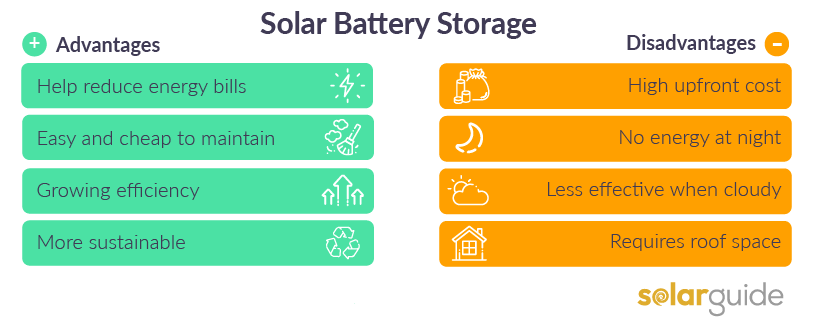
Advantages of Solar PV systems
There are various solar panel benefits and advantages that make them an ideal power source:
Solar PV systems can significantly reduce your energy bills
Solar PV systems can generate a significant amount of the electricity you need in your home and, as this electricity is free, you will need to buy less from your supplier. The amount you’ll save will depend on how many panels you install, how much sunlight your home benefits from, and how much solar electricity will be usable.
If you are not at home during the day when the electricity is being generated anything not used will be fed into the national grid. However, residents can install solar batteries to store the electricity during the day for use at night, and thus maximise savings.
Solar PV systems are easy (and cheap) to maintain
The only maintenance you need to think about is cleaning the solar panels occasionally to ensure they get as much sunlight as possible. This can be done by you or professional companies for a small charge. Solar panels typically include a 25-30 year manufacturer’s warranty while the inverter is usually guaranteed for 5-10 years. As solar panels have no moving parts, wear and tear is not an issue.
Solar PV technology is more efficient than ever
Solar panel efficiency has improved rapidly since they first hit the market and now the best models can reach efficiencies of up to 25%. The efficiency will decrease as the cells in the panels degrade over time, but the manufacturer will guarantee a minimum efficiency for the warranty period.
Solar PV technology is environmentally friendly
Using more renewable energy and reducing your reliance on fossil fuels can help decelerate climate change. Fossil fuels are not only running out, but when we use natural gas or oil in our homes, cars or the production of electricity we are adding carbon to the atmosphere which is one of the greenhouse gases causing our climate to change. Solar electricity produces no emissions and is not likely to run out for at least a few billion years.
Solar PV panel costs are dropping rapidly
The cost of photovoltaic panels has dropped year-on-year and, today, are over 60% cheaper than they were in 2010.
If all these various advantages sound good to you, you may already be clamouring to get some solar panels of your own. However, to do this, you'll need an installer you can trust. Ordinarily, this can take days of rigorous research while going through the effort of reaching out to individual professionals by yourself. Thankfully, there's a simpler way.
Our handy service can provide you with up to 4 free, non-binding quotes from installers in your area, allowing you to pick the best price from multiple vetted candidates. We do the heavy lifting and find you the ones you can trust so you can make the final decision. Click the button below to get started.
Disadvantages of Solar PV systems
Solar PV panels have a high upfront cost
While prices are lower than ever, installing solar panels, an inverter, and wiring still requires a significant investment of £6,000 on average which can be a barrier for some people.
Solar PV panels won’t generate electricity at night
Solar panels will only generate electricity when exposed to sunlight so you will not have electricity to use after dark. When the panels generate more electricity than is being used, the surplus electricity will be fed into the national grid. As many people are out of the home during the day and at home during the evening, this can pose a problem unless they have a solar battery.
Solar PV panels are less effective on cloudy days
While solar panels will still generate electricity on cloudy days, the efficiency level will drop which will reduce your savings.
Solar PV panels require a lot of space on the roof
Solar panels should be installed on a south-facing roof for maximum electricity generation and do take up a lot of space on the roof, especially if you want to install enough to cover most of your electricity demand. In addition, some people don’t like the look of solar panels on a roof which is a matter of personal taste, but it is possible to install ground-based solar panels in some cases.
Is a solar photovoltaic system right for your home
Despite these considerations, investing in solar PV can be a great move for most homeowners looking to reduce their electricity bills and become less dependent on energy suppliers and their rising prices. Solar panels are cheaper than they have been since 2010 and have the potential to add value to your property. In addition, when the Smart Export Guarantee comes into effect, you will also be earning money for the energy the PV system generates.
To make the most of solar PV systems, you will need a south-facing roof pitched at the right angle, a decent amount of roof space, and planning permission for installation. There are several other factors that can affect solar panel efficiency, so make sure your home is suitable for them.
If the pros of solar PV systems outweigh the cons for you, it might be time to find an installer. Finding an installer you can trust is a laborious task that can take days. However, we can make this entire process painless using our extensive network of vetted installers.
By filling out a simple, 30-second enquiry form we can quickly help you find multiple quotes and save you a lot of time and research by providing up to 4 free, non-binding quotes from MCS certified (or equivalent) solar installers in your area. You can compare their professional advice and prices to see what works for you. All you need to do is click the button below.
FAQ
What is a solar photovoltaic system?
A solar photovoltaic system converts solar energy into electricity with the use of solar cells that utilise semiconductors. There are multiple types of solar photovoltaic systems depending on their material.
How do photovoltaic panels collect energy from the sun?
A PV solar cell is a multilayer system comprised of specially treated semiconductors that allow it to convert solar energy into domestic electricity. The efficiency of this process depends on several factors.
What is the difference between solar and photovoltaic?
Photovoltaic solar panels are a type of solar panel, but not all solar panels are inherently photovoltaic (such as thermal solar panels). There are also many different sub-types of photovoltaic solar panels.
What are the types of solar photovoltaic cells?
Monocrystalline, polycrystalline, thin-film, and III-V are all different types of photovoltaic cells. Photovoltaic systems, as a group, have distinct advantages and disadvantages.
Find local, MSC certified Solar Installers
Start your quote
Find local, MSC certified Solar Installers







